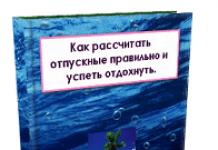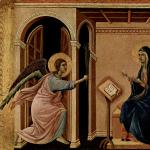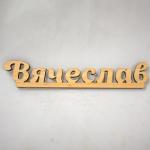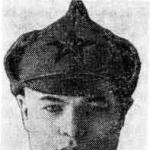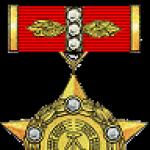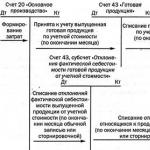Nikolai Alekseevich Nekrasov was born on November 28 (December 10), 1821 in the city of Nemirov, Podolsk province, into a wealthy landowner family. The writer spent his childhood years in the Yaroslavl province, the village of Greshnevo, on a family estate. The family was large - the future poet had 13 sisters and brothers.
At the age of 11, he entered the gymnasium, where he studied until the 5th grade. Young Nekrasov’s studies were not going well. It was during this period that Nekrasov began to write his first satirical poems and write them down in a notebook.
Education and the beginning of a creative path
The poet's father was cruel and despotic. He deprived Nekrasov of financial assistance when he did not want to enlist in military service. In 1838, Nekrasov’s biography included a move to St. Petersburg, where he entered the university as a volunteer student at the Faculty of Philology. In order not to die of hunger, experiencing a great need for money, he finds part-time work, gives lessons and writes poetry to order.
During this period, he met the critic Belinsky, who would later have a strong ideological influence on the writer. At the age of 26, Nekrasov, together with the writer Panaev, bought the Sovremennik magazine. The magazine quickly became popular and had significant influence in society. In 1862, the government banned its publication.
Literary activity
Having accumulated enough funds, Nekrasov published his debut collection of poems, “Dreams and Sounds” (1840), which failed. Vasily Zhukovsky advised that most of the poems in this collection should be published without the name of the author. After this, Nikolai Nekrasov decides to move away from poetry and take up prose, writing novellas and short stories. The writer is also engaged in the publication of some almanacs, in one of which Fyodor Dostoevsky made his debut. The most successful almanac was the “Petersburg Collection” (1846).
From 1847 to 1866 he was the publisher and editor of the Sovremennik magazine, which employed the best writers of that time. The magazine was a hotbed of revolutionary democracy. While working at Sovremennik, Nekrasov published several collections of his poems. His works “Peasant Children” and “Peddlers” brought him wide fame.
On the pages of the Sovremennik magazine, such talents as Ivan Turgenev, Ivan Goncharov, Alexander Herzen, Dmitry Grigorovich and others were discovered. The already famous Alexander Ostrovsky, Mikhail Saltykov-Shchedrin, Gleb Uspensky were published in it. Thanks to Nikolai Nekrasov and his magazine, Russian literature learned the names of Fyodor Dostoevsky and Leo Tolstoy.
In the 1840s, Nekrasov collaborated with the magazine Otechestvennye zapiski, and in 1868, after the closure of the Sovremennik magazine, he rented it from the publisher Kraevsky. The last ten years of the writer’s life were associated with this magazine. At this time, Nekrasov wrote the epic poem “Who Lives Well in Rus'” (1866-1876), as well as “Russian Women” (1871-1872), “Grandfather” (1870) - poems about the Decembrists and their wives, and some other satirical works , the pinnacle of which was the poem “Contemporaries” (1875).
Nekrasov wrote about the suffering and grief of the Russian people, about the difficult life of the peasantry. He also introduced a lot of new things into Russian literature, in particular, he used simple Russian colloquial speech in his works. This undoubtedly showed the richness of the Russian language, which came from the people. In his poems, he first began to combine satire, lyricism and elegiac motifs. Briefly speaking, the poet’s work made an invaluable contribution to the development of Russian classical poetry and literature in general.
Personal life
The poet had several love affairs in his life: with the owner of the literary salon Avdotya Panaeva, the Frenchwoman Selina Lefren, and the village girl Fyokla Viktorova.
One of the most beautiful women in St. Petersburg and the wife of the writer Ivan Panaev, Avdotya Panaeva, was liked by many men, and the young Nekrasov had to make a lot of effort to win her attention. Finally, they confess their love to each other and begin to live together. After the early death of their common son, Avdotya leaves Nekrasov. And he leaves for Paris with the French theater actress Selina Lefren, whom he had known since 1863. She remains in Paris, and Nekrasov returns to Russia. However, their romance continues at a distance. Later, he meets a simple and uneducated girl from the village, Fyokla (Nekrasov gives her the name Zina), with whom they later got married.
Nekrasov had many affairs, but the main woman in Nikolai Nekrasov’s biography was not his legal wife, but Avdotya Yakovlevna Panaeva, whom he loved all his life.
last years of life
In 1875, the poet was diagnosed with intestinal cancer. In the painful years before his death, he wrote “Last Songs” - a cycle of poems that the poet dedicated to his wife and last love, Zinaida Nikolaevna Nekrasova. The writer died on December 27, 1877 (January 8, 1878) and was buried in St. Petersburg at the Novodevichy cemetery.
Chronological table
- The writer did not like some of his own works, and he asked not to include them in collections. But friends and publishers urged Nekrasov not to exclude any of them. Perhaps this is why the attitude towards his work among critics is very contradictory - not everyone considered his works to be brilliant.
- Nekrasov was fond of playing cards, and quite often he was lucky in this matter. Once, while playing for money with A. Chuzhbinsky, Nikolai Alekseevich lost a large sum of money to him. As it turned out later, the cards were marked with the enemy's long fingernail. After this incident, Nekrasov decided to no longer play with people who have long nails.
- Another passionate hobby of the writer was hunting. Nekrasov loved to go bear hunting and hunt game. This hobby found a response in some of his works (“Peddlers”, “Dog Hunt”, etc.) One day, Nekrasov’s wife, Zina, accidentally shot his beloved dog during a hunt. At the same time, Nikolai Alekseevich’s passion for hunting came to an end.
- A huge number of people gathered at Nekrasov’s funeral. In his speech, Dostoevsky awarded Nekrasov third place in Russian poetry after
Literature Zhdanov V.V. Life of Nekrasov. –M., Skatov N.I. I dedicated the lyre... - M., Chukovsky K.I. Nekrasov's mastery. – M., Rozanova L.A. Nekrasov’s poem “Who Lives Well in Rus'”: Commentary. – L., SGPI website (department of literature.

N.A. Nekrasov, Nemirovo, Ukraine. S.Greshnevo, Yaroslavl province, Yaroslavl gymnasium, St. Petersburg - “Dreams and Sounds”. “Repertoire and Pantheon”, “Literary newspaper”. N. Perepelsky and his vaudeville - acquaintance with V. Belinsky.


Publishing activity Together with I.I. Panaev, he acquires the right to publish the magazine “Sovremennik” - publishes the magazine “Domestic Notes”.





The theme of the city is “Am I driving along a dark street at night...”, Cycle of poems “On the Street”, Cycle “About the Weather”. Protest against social injustice, against the bitter fate of the poor. New principles of lyricism: psychological nakedness of experiences, bold social depiction of life.

“Thief” The bitten roll trembled in his hand; He was without boots, in a frock coat with holes; The face showed a trace of a recent illness, Shame, despair, prayer and fear... “Morning Walk” St. Petersburg got to him in a bad way: He lost his wife in a flood, He dragged himself around apartments for a whole century And burned out fourteen times.

The theme of the poet and poetry is “Yesterday at six o’clock...”, “The Poet and the Citizen”, “The Poet”, “Blessed is the Kindly Poet”, “To the Poet”, “Elegy”, etc. Nekrasov is convinced that poetry should not be limited to sublime and beautiful themes, celebrating love, nature and beauty. Its purpose is to serve society, ennobling and elevating a person, shaping his progressive worldview.



“Panaev's Cycle” is an example of how the personal, intimate in the lyrics becomes universal. Motives for the quarrel (“If, tormented by rebellious passion...”, “You and I are stupid people...”); parting, separation (“So this is a joke? My dear...”, “Farewell”) or their premonitions (“I don’t like your irony...”); memories (“Yes, our life flowed rebelliously...”, “Long ago rejected by you...”); letters (“Burnt Letters”), etc. “A difficult year has broken me with illness...”, “I have suffered a heavy cross...”, “Forgive me,” “Farewell.”


M.M. Mikhailov () In “The Landowner” there are motifs from “Hound Hunt”. In "Grun" - "Troika".



Plan for the biography of Nekrasov
- 1.When I gave birth
2.What did you write?
3.His parents
4. How and why he died
And it’s all so simple for everyone! - 1. Childhood
2. Youth
4. Disease - 1. Childhood
Nekrasov Nikolai Alekseevich was born on December 28, 1821 in the quiet town of Podolsk province Nemirovo, where that year the regiment in which his father, Aleksey Sergeevich Nekrasov, who came from a family of small landed nobles, served was temporarily stationed.
His childhood years were spent in the village of Greshnev, on the family estate of his father, a man of a despotic character who oppressed not only the serfs, but also his family, which the future poet witnessed. Perhaps this is why in Nekrasov’s works one can discern notes of pity for his own mother. The poet's mother, an educated woman, was his first teacher; she instilled in him a love of literature and the Russian language.
2. Youth
In 1832-1837 Nekrasov studied at the Yaroslavl gymnasium. Then he began to write poetry.
At the age of 17 he moved to St. Petersburg, but, refusing to devote himself to a military career, as his father insisted, he was deprived of material support. In 1838, against the will of his father, the future poet tries to enter the university. Having failed the entrance exams, he became a volunteer student and attended lectures at the Faculty of Philology for two years. The disasters that befell Nekrasov were subsequently reflected in his poems and the unfinished novel “The Life and Adventures of Tikhon Trostnikov.”
In order not to die of hunger, he began to write poetry commissioned by booksellers. At this time he met V. Belinsky. Soon Nekrasov’s business took off, he gives lessons, writes small articles for local newspapers, which even allows him to save money).
3. Literary and journalistic activities
Nikolai Alekseevich's affairs went so successfully that in 1847 Nekrasov and Panaev acquired the Sovremennik magazine, founded by A. S. Pushkin. The influence of the magazine grew every year, until in 1862 the government suspended its publication and then completely banned the magazine. This year Nekrasov acquired the Karabikha estate, not far from Yaroslavl, where he came every summer, spending time hunting and communicating with friends from the people.
After the closure of the Sovremennik magazine, Nekrasov acquired the right to publish Otechestvennye Zapiski, with which the last ten years of his life were associated. During these years he worked on the poem “Who Lives Well in Rus'” (1866-76), wrote poems about the Decembrists and their wives (“Grandfather”, 1870; “Russian Women”, 1871-72). In addition, he created a series of satirical works, the pinnacle of which was the poem “Contemporaries” (1875).
4. Disease
But the euphoria from a good life did not last long, because already in 1850 the writer became very ill (doctors even predicted his imminent death), but the trip to Italy significantly improved Nekrasov’s health. In 1875, Nekrasov was diagnosed with intestinal cancer, after which the writer’s life turned into a slow departure to another world. It was in the period before his death that Nekrasov, having received support from loved ones, took up creativity with renewed vigor. Nikolai Alekseevich died in December 1877. The funeral of this extraordinary, but undoubtedly great personality in Russian literature, was organized by numerous fans and took place at the Novodevichy cemetery - That's right, nata. sha
I copied. Thank you! - 1. Childhood
Nekrasov Nikolai Alekseevich was born on December 28, 1821 in the quiet town of Podolsk province Nemirovo, where that year the regiment in which his father, Aleksey Sergeevich Nekrasov, who came from a family of small landed nobles, served was temporarily stationed.
His childhood years were spent in the village of Greshnev, on the family estate of his father, a man of a despotic character who oppressed not only the serfs, but also his family, which the future poet witnessed. Perhaps this is why in Nekrasov’s works one can discern notes of pity for his own mother. The poet's mother, an educated woman, was his first teacher; she instilled in him a love of literature and the Russian language.
2. Youth
In 1832-1837 Nekrasov studied at the Yaroslavl gymnasium. Then he began to write poetry.
At the age of 17 he moved to St. Petersburg, but, refusing to devote himself to a military career, as his father insisted, he was deprived of material support. In 1838, against the will of his father, the future poet tries to enter the university. Having failed the entrance exams, he became a volunteer student and attended lectures at the Faculty of Philology for two years. The disasters that befell Nekrasov were subsequently reflected in his poems and the unfinished novel “The Life and Adventures of Tikhon Trostnikov.”
In order not to die of hunger, he began to write poetry commissioned by booksellers. At this time he met V. Belinsky. Soon Nekrasov’s business took off, he gives lessons, writes small articles for local newspapers, which even allows him to save money).
3. Literary and journalistic activities
Nikolai Alekseevich's affairs went so successfully that in 1847 Nekrasov and Panaev acquired the Sovremennik magazine, founded by A. S. Pushkin. The influence of the magazine grew every year, until in 1862 the government suspended its publication and then completely banned the magazine. This year Nekrasov acquired the Karabikha estate, not far from Yaroslavl, where he came every summer, spending time hunting and communicating with friends from the people.
After the closure of the Sovremennik magazine, Nekrasov acquired the right to publish Otechestvennye Zapiski, with which the last ten years of his life were associated. During these years he worked on the poem “Who Lives Well in Rus'” (1866-76), wrote poems about the Decembrists and their wives (“Grandfather”, 1870; “Russian Women”, 1871-72). In addition, he created a series of satirical works, the pinnacle of which was the poem “Contemporaries” (1875).
4. Disease
But the euphoria from a good life did not last long, because already in 1850 the writer became very ill (doctors even predicted his imminent death), but the trip to Italy significantly improved Nekrasov’s health. In 1875, Nekrasov was diagnosed with intestinal cancer, after which the writer’s life turned into a slow departure to another world. It was in the period before his death that Nekrasov, having received support from loved ones, took up creativity with renewed vigor. Nikolai Alekseevich died in December 1877. The funeral of this extraordinary, but undoubtedly great personality in Russian literature, was organized by numerous fans and took place at the Novodevichy cemetery. - Nekrasov Nikolai Alekseevich was born on December 28, 1821 in the quiet town of Podolsk province Nemirovo, where that year the regiment in which his father, Aleksey Sergeevich Nekrasov, who came from a family of small landed nobles, served was temporarily stationed.
His childhood years were spent in the village of Greshnev, on the family estate of his father, a man of a despotic character who oppressed not only the serfs, but also his family, which the future poet witnessed. Perhaps this is why in Nekrasov’s works one can discern notes of pity for his own mother. The poet's mother, an educated woman, was his first teacher; she instilled in him a love of literature and the Russian language.
2. Youth
In 1832-1837 Nekrasov studied at the Yaroslavl gymnasium. Then he began to write poetry.
At the age of 17 he moved to St. Petersburg, but, refusing to devote himself to a military career, as his father insisted, he was deprived of material support. In 1838, against the will of his father, the future poet tries to enter the university. Having failed the entrance exams, he became a volunteer student and attended lectures at the Faculty of Philology for two years. The disasters that befell Nekrasov were subsequently reflected in his poems and the unfinished novel “The Life and Adventures of Tikhon Trostnikov.”
In order not to die of hunger, he began to write poetry commissioned by booksellers. At this time he met V. Belinsky. Soon Nekrasov’s business took off, he gives lessons, writes small articles for local newspapers, which even allows him to save money).
3. Literary and journalistic activities
Nikolai Alekseevich's affairs went so successfully that in 1847 Nekrasov and Panaev acquired the Sovremennik magazine, founded by A. S. Pushkin. The influence of the magazine grew every year, until in 1862 the government suspended its publication and then completely banned the magazine. This year Nekrasov acquired the Karabikha estate, not far from Yaroslavl, where he came every summer, spending time hunting and communicating with friends from the people.
After the closure of the Sovremennik magazine, Nekrasov acquired the right to publish Otechestvennye Zapiski, with which the last ten years of his life were associated. During these years he worked on the poem “Who Lives Well in Rus'” (1866-76), wrote poems about the Decembrists and their wives (“Grandfather”, 1870; “Russian Women”, 1871-72). In addition, he created a series of satirical works, the pinnacle of which was the poem “Contemporaries” (1875).
4. Disease
But the euphoria from a good life did not last long, because already in 1850 the writer became very ill (doctors even predicted his imminent death), but the trip to Italy significantly improved Nekrasov’s health. In 1875, Nekrasov was diagnosed with intestinal cancer, after which the writer’s life turned into a slow departure to another world. It was in the period before his death that Nekrasov, having received support from loved ones, took up creativity with renewed vigor. Nikolai Alekseevich died in December 1877. The funeral of this extraordinary, but undoubtedly great personality in Russian literature, was organized by numerous fans and took place at the Novodevichy cemetery.
Left a reply Guest
Biography of Nekrasov Nikolai Alekseevich Nekrasov is a classic of Russian poetry, writer and publicist. He was a revolutionary democrat, editor and publisher of the Sovremennik magazine and editor of the Otechestvennye Zapiski magazine. One of the most important and famous works of the writer is the poem “Who Lives Well in Rus'.”
Early years Nikolai Alekseevich Nekrasov was born on November 28, 1821 in the city of Nemirov, Podolsk province, into a wealthy landowner family. The writer spent his childhood years in the Yaroslavl province, the village of Greshnevo, on a family estate. The family was large - the future poet had 13 sisters and brothers. At the age of 11, he entered the gymnasium, where he studied until the 5th grade. Young Nekrasov’s studies were not going well. It was during this period that Nekrasov began to write his first satirical poems and write them down in a notebook.
Education and the beginning of his creative career The poet’s father was cruel and despotic. He deprived Nekrasov of financial assistance when he did not want to enlist in military service. In 1838, Nekrasov’s biography included a move to St. Petersburg, where he entered the university as a volunteer student at the Faculty of Philology. In order not to die of hunger, experiencing a great need for money, he finds part-time work, gives lessons and writes poetry to order. During this period, he met the critic Belinsky, who would later have a strong ideological influence on the writer. At the age of 26, Nekrasov, together with the writer Panaev, bought the Sovremennik magazine. The magazine quickly became popular and had significant influence in society. In 1862, the government banned its publication.
Literary activity Having accumulated enough funds, Nekrasov published his debut collection of poems, “Dreams and Sounds,” which failed. Vasily Zhukovsky advised that most of the poems in this collection should be published without the name of the author. After this, Nikolai Nekrasov decides to move away from poetry and engage in prose, writing novellas and short stories. The writer is also engaged in the publication of some almanacs, in one of which Fyodor Dostoevsky made his debut. The most successful almanac was the Petersburg Collection. From 1847 to 1866 he was the publisher and editor of the Sovremennik magazine, which employed the best writers of that time. The magazine was a hotbed of revolutionary democracy. While working at Sovremennik, Nekrasov published several collections of his poems. His works “Peasant Children” and “Peddlers” brought him wide fame. On the pages of the Sovremennik magazine, such talents as Ivan Turgenev, Ivan Goncharov, Alexander Herzen, Dmitry Grigorovich and others were discovered. The already famous Alexander Ostrovsky, Mikhail Saltykov-Shchedrin, Gleb Uspensky were published in it. Thanks to Nikolai Nekrasov and his magazine, Russian literature learned the names of Fyodor Dostoevsky and Leo Tolstoy.In the 1840s, Nekrasov collaborated with the magazine Otechestvennye zapiski, and in 1868, after the closure of the Sovremennik magazine, he leased it from the publisher Kraevsky. The last ten years of the writer’s life were associated with this magazine. At this time, Nekrasov wrote the epic poem “Who Lives Well in Rus'”, as well as “Russian Women”, “Grandfather” - poems about the Decembrists and their wives, and some other satirical works, the pinnacle of which was the poem “Contemporaries”. Nekrasov wrote about the suffering and grief of the Russian people, about the difficult life of the peasantry. He also introduced a lot of new things into Russian literature, in particular, he used simple Russian colloquial speech in his works. This undoubtedly showed the richness of the Russian language, which came from the people. In his poems, he first began to combine satire, lyricism and elegiac motifs. Briefly speaking, the poet’s work made an invaluable contribution to the development of Russian classical poetry and literature in general.
Personal life The poet had several love affairs in his life: with the owner of the literary salon Avdotya Panaeva, the Frenchwoman Selina Lefren, the village girl Fyokla Viktorova. One of the most beautiful women in St. Petersburg and the wife of the writer Ivan Panaev - Avdotya Panaeva - was liked by many men, and young Nekrasov had to put in a lot efforts to win her attention. Finally, they confess their love to each other and begin to live together. After the early death of their common son, Avdotya leaves Nekrasov. And he leaves for Paris with the French theater actress Selina Lefren, whom he had known since 1863. She remains in Paris, and Nekrasov returns to Russia. However, their romance continues at a distance. Later, he meets a simple and uneducated girl from the village, Thekla, with whom they later got married. Nekrasov had many affairs, but the main woman in Nikolai Nekrasov’s biography was not his legal wife, but Avdotya Yakovlevna Panaeva, whom he loved all his life.
Nekrasov Nikolai Alekseevich, whose biography begins on November 28 (December 10), 1821, was born in the small town of Nemirov, located on the territory of the Vinnitsa district of the Podolsk province (now the territory of Ukraine).
The poet's childhood
After the birth of their son, the Nekrasov family lived in the village of Greshnev, which at that time belonged to the Yaroslavl province. There were a lot of children - thirteen (although only three of them survived), and therefore it was very difficult to support them. Alexey Sergeevich, the head of the family, was forced to also take on the job of a police officer. This work could hardly be called fun and interesting. Little Nikolai Nekrasov Sr. often took little Nikolai Nekrasov Sr. with him to work, and therefore the future poet from a very early age saw the problems that ordinary people faced and learned to sympathize with them.
At the age of 10, Nikolai was sent to the Yaroslavl gymnasium. But at the end of the 5th grade, he abruptly stopped studying. Why? Biographers have differing opinions on this issue. Some believe that the boy was not too diligent in his studies, and his success in this field left much to be desired, while others are of the opinion that his father simply stopped paying for his education. Or perhaps both of these reasons occurred. One way or another, Nekrasov’s biography continues in St. Petersburg, where a sixteen-year-old young man is sent to enter a military school (noble regiment).
Difficult years
The poet had every opportunity to become an honest servant, but fate decided otherwise. Arriving in the cultural capital of the empire - St. Petersburg - Nekrasov meets and communicates with the students there. They awakened in him a strong thirst for knowledge, and therefore the future poet decides to go against the will of his father. Nikolai begins to prepare to enter university. He fails: he could not pass all the exams. However, this did not stop him: from 1839 to 1841. The poet goes to the Faculty of Philology as a volunteer student. In those days, Nekrasov lived in terrible poverty, because his father did not give him a single penny. The poet often had to go hungry, and it even got to the point that he spent the night in homeless shelters. But there were also bright moments: for example, it was in one of these places that Nikolai earned his first money (15 kopecks) for help in writing a petition. The difficult financial situation did not break the spirit of the young man and he vowed to himself, despite any obstacles, to achieve recognition.
Literary activity of Nekrasov
A biography of Nekrasov is impossible without mentioning the stages of his formation as a poet and writer.
Soon after the events described above, Nikolai's life began to improve. He got a job as a tutor, and was often tasked with composing fairy tales and ABCs for popular print publishers. A good part-time job was writing small articles for the Literary Newspaper, as well as the Literary Supplement to the Russian Invalid. Several vaudevilles he composed and published under the pseudonym “Perepelsky” were even staged on the Alexandria stage. Having put aside some money, in 1840 Nekrasov published his first collection of poems, which was called “Dreams and Sounds.”

Nekrasov’s biography was not without struggle with critics. Despite the fact that they treated him ambiguously, Nikolai himself was extremely upset by the negative review of the authoritative Belinsky. It even got to the point that Nekrasov himself bought up most of the circulation and destroyed the books. However, the few remaining copies made it possible to see Nekrasov in a completely unusual role as a writer of ballads. Later he moved on to other genres and themes.
Nekrasov spent the forties of the 19th century working closely with the journal Otechestvennye zapiski. Nikolai himself was a bibliographer. The turning point in his life can be considered his close acquaintance and the beginning of his friendship with Belinsky. After quite a bit of time, Nikolai Nekrasov’s poems began to be actively published. In a fairly short period of time, the almanacs “April 1”, “Physiology of St. Petersburg”, “Petersburg Collection” were published, in which the poems of the young poet were side by side with the works of the best authors of that period. Among them, among others, there were works by F. Dostoevsky, D. Grigorovich, I. Turgenev.
Publishing business was going well. This allowed Nekrasov and his friends to purchase the Sovremennik magazine at the end of 1846. In addition to the poet himself, many talented writers contribute to this magazine. And Belinsky gives Nekrasov an unusually generous gift - he gives the magazine a huge amount of materials that the critic had been collecting for a long time for his own publication. During the period of reaction, the content of Sovremennik was controlled by the tsarist authorities, and under the influence of censorship, they began to publish mostly works of the adventure genre. But, nevertheless, the magazine does not lose its popularity.
Next, Nekrasov’s biography takes us to sunny Italy, where the poet went in the 50s to be treated for a throat disease. Having recovered his health, he returns to his homeland. Here life is in full swing - Nikolai finds himself in advanced literary streams, communicates with people of high morality. At this time, the best and hitherto unknown sides of the poet’s talent are revealed. While working on the magazine, Dobrolyubov and Chernyshevsky became his faithful assistants and colleagues.
Despite the fact that Sovremennik was closed in 1866, Nekrasov did not give up. The writer rents Otechestvennye zapiski from his former “competitor,” which quickly rises to the same height as Sovremennik in its time.
Working with two of the best magazines of his time, Nekrasov wrote and published a lot of his works. Among them are poems (“Who Lives Well in Rus'”, “Peasant Children”, “Frost, Red Nose”, “Sasha”, “Russian Women”), poems (“Railroad”, “Knight for an Hour”, “Prophet ") and many others. Nekrasov was at the zenith of his fame.
last years of life

At the beginning of 1875, the poet was given a terrible diagnosis - “intestinal cancer.” His life became a complete misery, and only the support of devoted readers helped him somehow hold on. Telegrams and letters came to Nikolai even from the farthest corners of Russia. This support meant a lot to the poet: while struggling with pain, he continued to create. At the end of his life, he writes a satirical poem called “Contemporaries”, a sincere and touching cycle of poems “Last Songs”.
The talented poet and literary activist said goodbye to this world on December 27, 1877 (January 8, 1878) in St. Petersburg, at the age of only 56 years.
Despite the severe frost, thousands of people came to say goodbye to the poet and accompany him to his final resting place (Novodevichy Cemetery in St. Petersburg).
Love in the life of a poet
N.A. Nekrasov, whose biography is a real charge of vitality and energy, met three women in his life. His first love was Avdotya Panaeva. They were not officially married, but lived together for fifteen years. After some time, Nekrasov fell in love with a charming Frenchwoman, Selina Lefren. However, this novel was unsuccessful for the poet: Selina left him, and before that she squandered a fair part of his fortune. And finally, six months before his death, Nekrasov got married to Fyokla Viktorova, who loved him dearly and took care of him until his last day.
